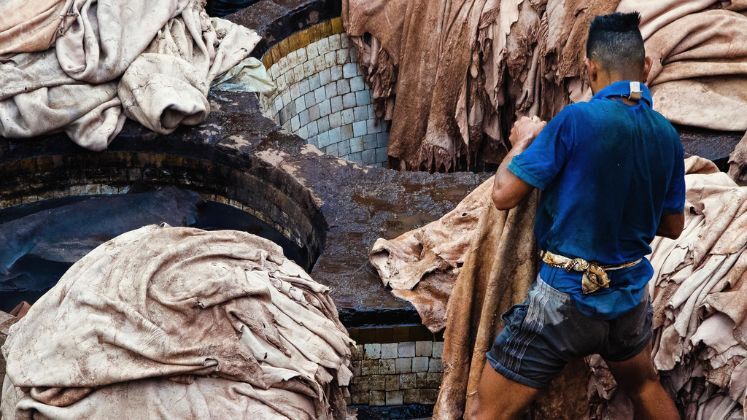
After the Eid-ul-Adha festival, the rawhide collection in Bangladesh is expected to drop significantly. Tanners estimate that this dip will be between 10 and 15 percent, or about 80 lakh pieces, as opposed to over 90 lakh pieces the previous year. Md Shaheen Ahamed, Chairman of the Bangladesh Tanners Association (BTA), said the decline is mostly due to increased inflation, which has reduced people’s spending on sacrificial animals.
In addition to some buffalo and camel skins, the BTA intends to purchase some 50 lakh cowhides in planned shape. However, many cowhides have been harmed by common skin conditions, which could lower their market value. In the meantime, this year’s goat hides are of higher quality due to fewer goat sacrifices and increased knowledge about appropriate hide processing.
According to the BTA, as of June 10th, Savar Chamra Shilpa Nagari, the nation’s primary centre for leather processing, has received almost 50,000 goat skins and 4.05 lakh salted cowhides.
Regional vendors are busily gathering salted hides all over the nation, while tanners are buying rawhide at government-set prices of BDT 60–65 per square foot in Dhaka and BDT 55–60 outside the capital. Later this week, further shipments are anticipated to reach Dhaka.
The government’s decision to allow the export of wet blue leather, the intermediate stage of leather production, for the first time since 1990 has caused rawhide prices to soar this year, reaching 100 per cent. Salted rawhide is used to make wet blue leather, which can be kept for up to a year before being processed further to create finished leather.
Prices have increased due to export potential, but local tanners worry that if exports draw much higher prices outside, there may be a lack of wet blue leather at home. According to the BTA, more than 150 additional leather-processing plants are in operation across the country, and its 125 member tanneries have invested about Taka 10,000 crore to build facilities for full local value addition.
But at the moment, only roughly three dozen tanneries are financially secure, including four that have earned certification from the Leather Working Group (LWG). Growth is hampered by systemic issues facing the sector, such as environmental non-compliance and inadequate certification.
Wet blue leather export prices are now not significantly higher than domestic pricing, according to Md. Mizanur Rahman, General Secretary of the BTA.
With an annual revenue of about US $ 1.2 billion, leather and leather products continue to rank as Bangladesh’s second-largest export industry. The government hopes to increase this amount to US $ 5 billion by 2030. However, industry participants caution that environmental issues, specifically the malfunction of the central effluent treatment plant (CETP) at Savar, continue to undervalue the sector globally. Global consumers that care about sustainability are becoming less willing to purchase from companies that don’t adhere to environmental regulations.
To restore buyer trust and realise the full potential of the sector, industry leaders have urged the government to take immediate action to resolve the CETP issue.






